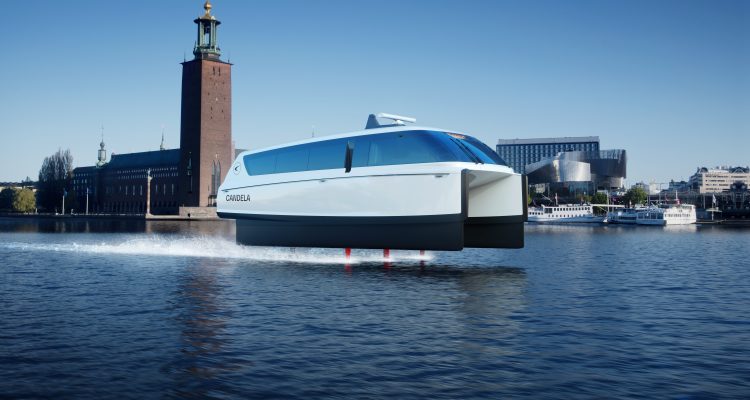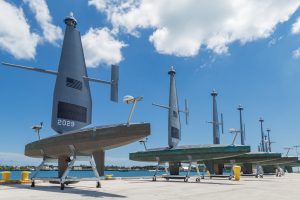Composites are an integral part of the multi-material autonomous vehicles. One of the biggest benefits is durability.
“We’re in an ocean environment, so corrosion is a huge factor,” says Cuyler. “Everything on these vehicles corrodes if it’s not composite.”
A second advantage of composites is their design flexibility. “We are able to create shapes and configurations that are designed for aerodynamics and easy to manufacture,” says Cuyler. “You can achieve shapes with glass fiber that you can’t do with metals.” In addition, composite materials allow Saildrone to rapidly iterate different designs, introducing new capabilities or adding sensors.
Janicki Industries is one of Saildrone’s manufacturing partners on the Voyager. It provides the upright rigid wing, deck hatches and a keel fairing made from composite materials, as well as some stainless steel components, including the keel fin and payload plates.
The composite components are primarily out-of-autoclave prepregs – a mix of GFRP and CFRP in selective spots, some foam cored and some solid laminate. Janicki uses standard aerospace processes, including temperature-rated carbon tools and an NC-Ply™ kit for the laminate and core. Components are laid up by hand, vacuum bagged and cured in an oven.
However, being a trusted partner isn’t just about delivering products; it’s a true collaboration. Saildrone provided an initial design package for the Voyager, then Janicki built the tools and vehicle components. The company offered invaluable manufacturing support along the way.
“What are ways we can reduce the cost? Where can we look at reducing the complexity of the manufacturing? Janicki is really good at bringing that information back to us: If you tweak this or move that, you can eliminate a part that isn’t necessary, which saves on cost and improves efficiency,” says Cuyler.
The companies also worked together to standardize processes, which has helped Janicki maintain its targeted 95% first pass yield rate. For example, the mast requires several concentric stations with bushings that need to be installed and bonded in place, all relative to the wing.
“We leveraged our aerospace capabilities and our large 5-axis machines to get a really solid fixture that we don’t have to think about,” says Jambor. “We don’t have to measure everything every single time. It’s repeatable, it’s accurate and it works.”
Janicki has recently begun work on the new Surveyor platform, providing design guidance to Saildrone’s engineers. While Saildrone is building the wings inhouse, Janicki will fabricate the trim tail off the back of the wing.
“We are all working together to help achieve Saildrone’s goals,” says Bryan Harris, program manager for Janicki’s Industrial Division. “We aren’t just trying to check boxes and fulfill a contract. We are trying to help them be successful.”
Susan Keen Flynn is managing editor of Composites Manufacturing magazine. Email comments to sflynn@keenconcepts.net.
Saildrone is working with the U.S. Navy to develop a hybrid fleet for long-term operations of unmanned and manned forces.
Photo Credit: Saildrone
Orion Collins, standing, and Tino Zenon-Esteba from Janicki Industries perform final inspection and ship preparations on a Voyager wing.
Photo Credit: Janicki Industries




